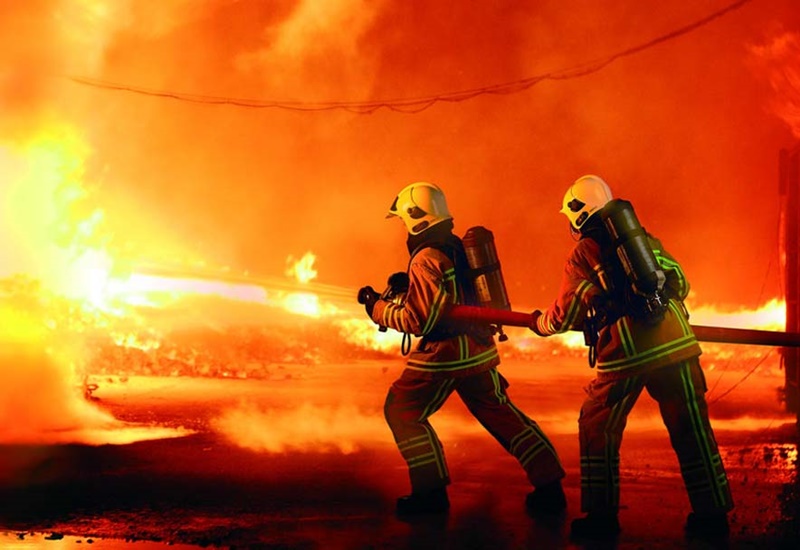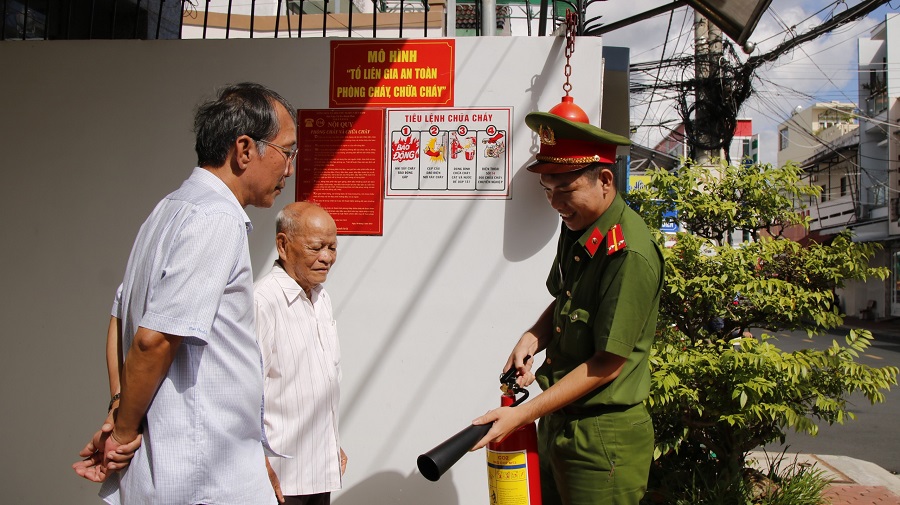Requirements of fire prevention and fighting in Vietnam according to Decree 79/2014/ND-CP
11:50, 11/07/2024
Decree 79/2014/ND-CP detailing a number of regulations on fire prevention and fighting in Vietnam.
| No | Subject | Condition |
| 1 | Establishments with fire and explosion hazards in Annex II of Decree 79 (schools, hospitals, markets, etc.) |
- Have regulations, rules, prohibition signs, warning signs, diagrams or instruction signs on fire prevention and fighting, and evacuation suitable to the characteristics and nature of the establishment's activities; - Establish and allocate responsibilities and tasks for fire prevention and fighting within the establishment; - Electrical, lightning protection, and anti-static systems; electrical equipment, fire and heat-generating devices, the use of fire and heat sources must ensure fire safety; - Have a technical process for fire safety appropriate to production, business, and service conditions; - Have on-site and specialized fire prevention and fighting forces trained in fire prevention and firefighting skills and organize a permanent standby ready to fight fire on-site; - Have a fire-fighting and evacuation plan; - Have a system of traffic, water supply, communication systems for firefighting, fire alarm, firefighting, fire prevention, and other firefighting equipment suitable to the characteristics and nature of the establishment, ensuring quantity, quality, and operation suitable to the standard and technical regulations on fire prevention and fighting; - Have inspection and acceptance documents on fire prevention and fighting approved by the Fire Police Department for projects specified in Annex IV of Decree 79; - Have a record of management and monitoring activities on fire prevention and fighting according to the regulations of the Ministry of Public Security. |
| 2 | High-rise buildings | - For high-rise buildings with a height >09 floors or ≥ 25m
- For steel-framed buildings with corrugated iron roofs exceeding the fire compartment area according to the standards and technical regulations on fire prevention and fighting must meet the conditions:
|
| 3 | Residential areas | - Have regulations, rules on fire prevention and fighting, using electricity, fire, and easily flammable and explosive substances; have prohibition signs, warning signs, diagrams or instruction signs on fire prevention and fighting and evacuation suitable to the characteristics of the residential area; - Have a fire prevention and fighting design, which must be reviewed and approved for new residential area constructions; - The electrical system must meet fire safety standards; - Have traffic systems, water sources for firefighting, measures to prevent fire spreading, fire prevention and fighting equipment ensuring quantity and quality according to the standards and technical regulations on fire prevention and fighting; - Have a fire-fighting and evacuation plan; - Have civil defense forces trained in fire prevention and fighting skills and organize a permanent standby ready to fight fire on-site; - Have records of management and monitoring activities on fire prevention and fighting according to the regulations of the Ministry of Public Security. |
| 4 | Households | - The cooking area, worship area, places using fire sources, heat sources, fire and heat-generating devices, the electrical system, and electrical devices must ensure safety in fire prevention and fighting; - Properties, materials, and flammable substances must be arranged, stored, and used conformably and safely in fire prevention and fighting; - Have firefighting equipment suitable to the characteristics of activities and conditions of each household. |
| 5 | Vehicles transporting hazardous goods concerning fire and explosion (vehicles running on an internal combustion engine or explosion-proof engine) | - The engine of the vehicle must be isolated from the cargo compartment with non-flammable materials or a buffer compartment; - The engine exhaust pipe must be placed in a concealed position or be covered, ensuring fire and explosion safety; - The electrical system (including the battery) must ensure no spark generation; copper-cored electrical wires must ensure insulation and have a cross-section according to the design; - The floor, structure of the cargo compartment, and other areas of the vehicle within the hazardous fire, explosion zone must be made of non-flammable or flame-retardant materials and not generate sparks due to friction; - Vehicles must have rain and sun cover roofs; - Vehicles transporting hazardous liquids concerning fire and explosion have grounding wires. For tank trucks transporting liquefied petroleum gas, compliance with TCVN 6484: 1999 is required; - Have sufficient firefighting equipment; - Ensure technical safety and environmental protection conditions; - Vehicles transporting hazardous substances and goods concerning fire and explosion by road and rail must have warning symbols of hazardous substances and goods concerning fire and explosion on the front windshield and both sides of the vehicle during the entire transportation process; - Vehicles transporting hazardous substances and goods concerning fire and explosion by water, during the day must display a signal flag with the letter “B”, and at night, there must be a red flashing signal light throughout the transportation process. |
| 6 | Vehicle operators, workers, and attendants on vehicles transporting hazardous goods concerning fire and explosion | - The vehicle operator must have a legal driving license as prescribed by law on road traffic, railway traffic, inland waterway traffic, and a certificate of fire prevention and firefighting training; - Workers and attendants on vehicles must have a certificate of fire prevention and firefighting training. |
Related Content
- Number of deputy directors of departments in Vietnam in accordance with Decree 45/2025/ND-CP
- Cases ineligible for pardon in Vietnam in 2025
- Decree 50/2025 amending Decree 151/2017 on the management of public assets in Vietnam
- Circular 07/2025 amending Circular 02/2022 on the Law on Environmental Protection in Vietnam
- Adjustment to the organizational structure of the Ministry of Health of Vietnam: Certain agencies are no longer listed in the organizational structure
- Vietnam aims to welcome 22-23 million international tourists in Vietnam in 2025
SEARCH ARTICLE
Related Article
-

- Plan for implementation of the Law on Fire Prevention ...
- 15:30, 04/02/2025
-

- Decree on administrative penalties in the field ...
- 17:34, 03/02/2025
-

- Prime Minister of Vietnam directs urgent solutions ...
- 17:33, 24/12/2024
-

- Provisions on fire prevention in the installation ...
- 18:00, 21/12/2024
-

- Prohibited acts regarding fire prevention and ...
- 17:30, 20/12/2024
JUST UPDATED
-

- Notable new policies of Vietnam effective as of ...
- 16:26, 11/04/2025
-
.Medium.png)
- Notable documents of Vietnam in the previous week ...
- 16:21, 11/04/2025
-
.Medium.png)
- Notable documents of Vietnam in the previous week ...
- 16:11, 02/04/2025
-
.Medium.png)
- Notable new policies of Vietnam to be effective ...
- 16:04, 02/04/2025
-
.Medium.png)
- Notable new policies of Vietnam effective from ...
- 14:51, 21/03/2025
New text summary report
-
Real estate
-
Policy analysis
-
Legal Counselling
-
Case law
-
Forms and Templates
-
New text catalog
-
New Text Notification
-
Highlights of the week
-
Finance
-
New policy in effect
-
Labor - Salary
-
Officials and civil servants
-
Land - Housing
-
Tax-free-fee
-
Custom
-
Enterprise - Investment
-
Administration
-
Insurance
-
Civil
-
Set of Laws
-
News about Case Law
-
Economy
-
Life
-
Health
-
Cultural
-
Commerce
-
Military
-
History
-
Strange story
-
Criminal
-
Traffic
-
Education
-
Other
 Article table of contents
Article table of contents
